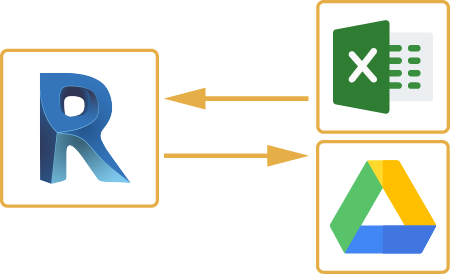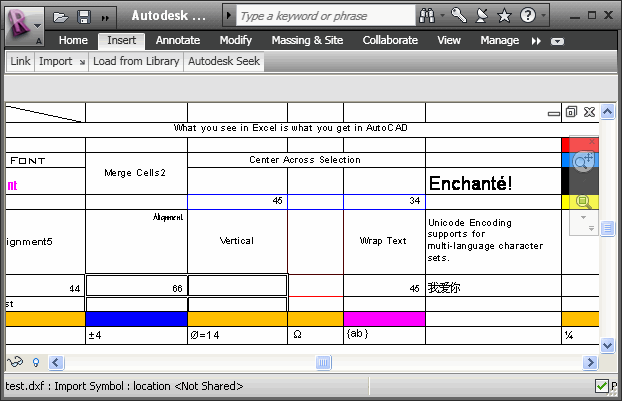Revit Tools: Your Secret to Precision and Efficiency
Wiki Article
Revit Accelerator: Excel Integration Approaches for Boosting Productivity and Cooperation
In this article, we will certainly discover the benefits of integrating Excel into your Revit workflows. And also, we will share ideal techniques for seamlessly integrating Excel into your Revit jobs. Get all set to supercharge your Revit experience with our Revit Accelerator: Excel Assimilation Techniques!Advantages of Excel Combination in Revit
The benefits of Excel integration in Revit are many and can significantly boost efficiency and cooperation. By flawlessly connecting these two powerful tools, you can simplify your operations and conserve useful time. With Excel combination, you can conveniently import and export information between Revit and Excel, allowing you to leverage the toughness of both programs.
An additional advantage of Excel integration is the ability to create vibrant timetables and records. By linking your Revit model to an Excel spread sheet, any type of adjustments made in Revit will immediately update in the corresponding Excel file. This makes it very easy to produce current routines, amount takeoffs, and other task paperwork.
Excel integration in Revit also makes it possible for much better collaboration among employee. With the capability to import and export information, you can conveniently share information with coworkers that may not have accessibility to Revit. This promotes efficient communication and enables better coordination and decision-making.
Improving Workflows With Revit and Excel
Improving workflows with Revit and Excel can considerably improve efficiency and collaboration. By incorporating the abilities of Revit and Excel, you can effortlessly move information between the 2 applications, getting rid of the requirement for hands-on data entry and reducing the threat of mistakes.
Making Use Of Revit and Excel with each other permits you to take advantage of the strengths of each program - import excel into revit. You can export information from Revit right into Excel, where you can execute complex estimations, produce charts and graphes, and examine the info in a more orderly and reliable manner. On the other hand, you can import information from Excel into Revit, enabling you to quickly update your designs and documentation based on changes made in Excel
The integration of Revit and Excel also advertises collaboration among team members. By sharing Excel data, you can quickly communicate and collaborate on design and construction-related data. This enhances sychronisation and ensures that everybody is dealing with one of the most updated information.
Taking Full Advantage Of Partnership With Excel and Revit
To optimize cooperation with Excel and Revit, you can flawlessly upgrade and share layout and construction-related information with your team. By integrating Excel with Revit, you can remove the demand for hands-on data entry and minimize the danger of errors. With simply a few clicks, you can import Excel spread sheets right into your Revit version, allowing you to see it here quickly gain access to and control the information. This combination enables you to team up a lot more efficiently with your team, as every person can work with the same information in real-time.One of the essential benefits of using Master conjunction with Revit is the capability to update data in both programs simultaneously. Any kind of adjustments made in Excel will automatically be reflected in Revit, and vice versa. This makes certain that everyone is dealing with one of the most up-to-date info, staying clear of confusion and conserving valuable time.
In addition, Excel supplies effective tools for examining and arranging information, which can significantly improve your collaboration efforts. You can produce custom records and charts in Excel, aiding you to visualize and interact important task information successfully. This can be particularly useful when providing data to stakeholders or making notified decisions based on project metrics.
Advanced Techniques for Improving Performance in Revit Utilizing Excel
By making use of sophisticated methods in Revit, you can substantially increase your productivity by leveraging the power of Excel. One of the vital approaches for improving efficiency is by utilizing Excel as an information monitoring device. With Revit's Excel combination attribute, you can link Excel spreadsheets straight to your Revit model, allowing you to easily handle and upgrade data. This assimilation allows you to create routines, determine quantities, and do data evaluation efficiently.
Furthermore, you can make use of Excel macros to automate repeated jobs in Revit (revit plugins). Macros enable you to tape a collection of actions and play them back check my blog with a single click, conserving official site you time and effort. As an example, you can create a macro to instantly create room schedules or update parameter worths wholesale.
Ideal Practices for Excel Assimilation in Revit
Making Use Of Excel as a data management tool in Revit enables for reliable monitoring and updating of data. One of the best practices for Excel assimilation in Revit is to create a clear and arranged information framework. By following these best methods, you can properly use Excel as a data administration tool in Revit and improve your performance and collaboration.Verdict
To conclude, incorporating Excel with Revit can substantially boost efficiency and partnership in the layout procedure. By maximizing and streamlining operations cooperation, teams can function a lot more successfully and successfully. Advanced strategies, such as using Excel macros and solutions, can further improve performance in Revit. It is important to adhere to finest methods to guarantee seamless combination and stay clear of any potential concerns. By leveraging the power of Excel, Revit users can attain higher degrees of performance and cooperation in their projects.With Excel combination, you can conveniently import and export data between Revit and Excel, allowing you to take advantage of the strengths of both programs.
One of the essential benefits of Excel integration is the ability to make use of Excel solutions and features within Revit. By connecting your Revit version to an Excel spreadsheet, any type of changes made in Revit will automatically update in the matching Excel documents. On the various other hand, you can import information from Excel right into Revit, allowing you to quickly update your designs and documentation based on changes made in Excel.
With Revit's Excel combination feature, you can link Excel spread sheets directly to your Revit design, permitting you to conveniently handle and upgrade data.
Report this wiki page